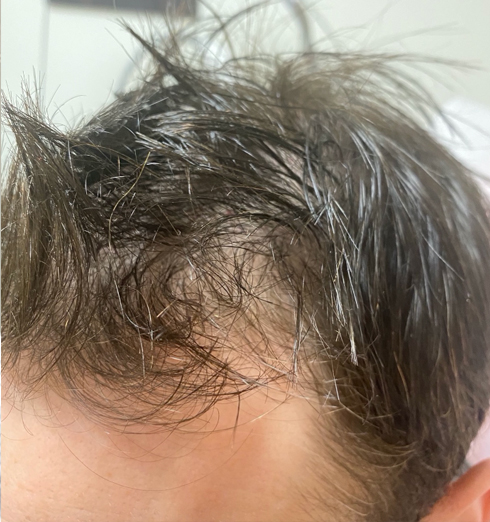Hair loss, also known as alopecia, is a common concern for many people. It can affect both men and women, and can be a source of significant emotional distress. While losing 50-100 hairs a day is normal, excessive shedding can indicate an underlying issue.
There are numerous reasons why hair loss occurs. Here’s a breakdown of some common causes:
- Hereditary Hair Loss (androgenic alopecia): This is the most frequent cause, affecting up to 50% of people. It’s linked to genetics and hormones, and presents as male pattern baldness (receding hairline) or female pattern baldness (thinning hair).
- Age: Hair growth naturally slows down with age. Hair follicles may eventually stop producing hair altogether, leading to thinning and a receding hairline.
- Medical Conditions: Certain medical conditions like thyroid disorders, scalp infections, and autoimmune diseases (alopecia areata) can contribute to hair loss.
- Stress: Severe physical or emotional stress can disrupt the hair growth cycle, leading to temporary hair loss.
- Diet and Nutrition: Deficiencies in iron, protein, biotin, or zinc can impact hair health and contribute to hair loss.
- Medications and Treatments: Some medications, particularly chemotherapy and radiation therapy used for cancer treatment, can cause hair loss as a side effect.
- Hairstyles and Hair Care Practices: Tight hairstyles that pull on the scalp (ponytails, braids) or harsh chemical treatments (coloring, straightening) can damage hair and contribute to breakage and hair loss.
If you’re experiencing hair loss, it’s important to consult a doctor or dermatologist to determine the underlying cause. Early diagnosis and treatment can help slow down hair loss and potentially promote regrowth.
Here are some treatment options a doctor might recommend:
- Medications: Minoxidil and Finasteride are FDA-approved medications for treating hereditary hair loss.
- Compounded Medications: Platforms like HairStim and Skin Medicinals have made creating compounded topicals easier. While it’s important to note that this is an off-label treatment, there is now an option for those who want treatments like Topical Finasteride or Topical Dutasteride. It’s important to consult with your physician to see what is appropriate for you
- Hair Transplantation: This surgical procedure involves transplanting hair follicles from a donor area of the scalp to a bald or thinning area.
- Laser Therapy: Low-level laser therapy is a relatively new option that may help stimulate hair growth.
- Dietary Changes and Supplements: Ensuring a balanced diet rich in essential nutrients can support healthy hair growth.
Remember, hair loss is a treatable condition.
By understanding the causes and seeking professional guidance, you can explore treatment options and regain confidence in your appearance.
